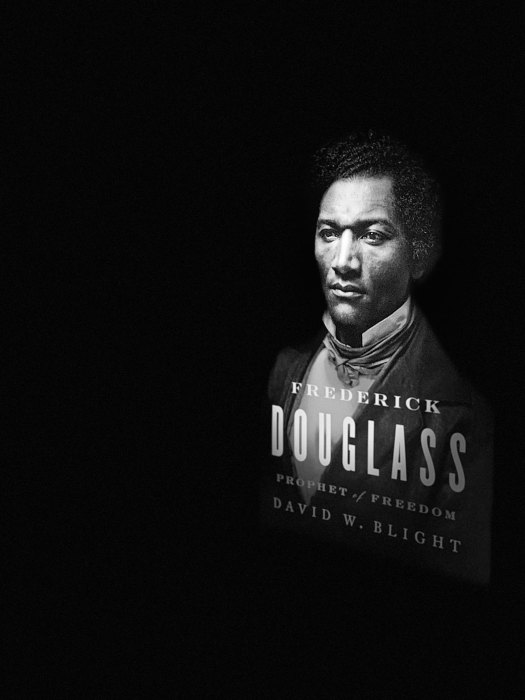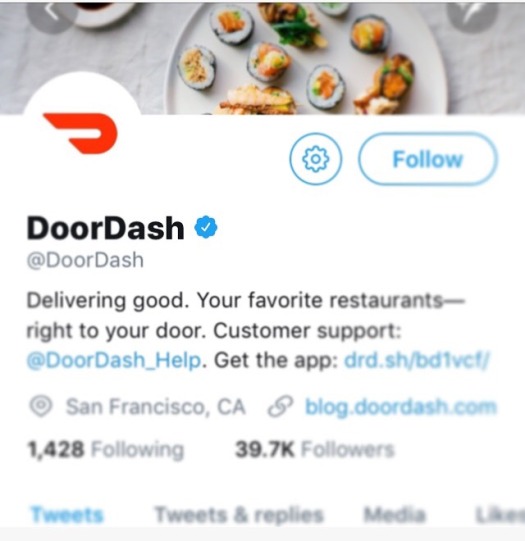 Hitler once stated, “The Jews are undoubtedly a race, but they are not human.” During the time of the Holocaust, the ideology of Jews as non-humans existed as a driving force for the Holocaust and genocide of the Jewish race. This ideology was exercised by Nazi Germany through the form of power. The abuse of this power also led to the dehumanization of German Nazis in Maus. Through the central theme of power, Spiegelman exposes his readers to the dehumanization of both Jews and Nazi prison guards in Maus.
Hitler once stated, “The Jews are undoubtedly a race, but they are not human.” During the time of the Holocaust, the ideology of Jews as non-humans existed as a driving force for the Holocaust and genocide of the Jewish race. This ideology was exercised by Nazi Germany through the form of power. The abuse of this power also led to the dehumanization of German Nazis in Maus. Through the central theme of power, Spiegelman exposes his readers to the dehumanization of both Jews and Nazi prison guards in Maus.
The concept of dehumanization refers to a reduction in a given human’s perception of their individuality as well as their recognition of the human-like characteristics and attributes in others. The misperception of regarding others as non-human includes perceiving them all together as a lower order of being than the human, perceiving them as “bad human” (a well-known part of collective prejudice) as well as perceiving them as non human, as if they are purely insentient things or a disposable stock of some type. Therefore, the abuse or elimination of these perceived non-humans is executed in absence of an active conscious or sense of troubledness.
The idea of dehumanization is more frequently utilized in regards to “ethnicity, race, and related topics such as immigration and genocide.” Expressing his idea in just that, Spiegelman uses the theme of power in order to emphasize the dehumanizing treatment of Jews during the Holocaust. Vladek mentions some of the first physical forms of power that the Nazi Germans placed on the Jews. “They put thousands of people there…it was so crowded that some of them actually suffocated…no food…no toilets. It was terrible.”
Here, Vladek is talking about when Jews were relocated and incarcerated in cramped apartment buildings. By expressing a form of physical power over the Jews, the Nazi Germans dehumanized them, taking away their basic human liberties to control where they go as well as forcing them to live in conditions so dense, that it could be compared to that of the animals on factory farms. Here, we see the Jews being treated as sub-human. They were given very minimal resources such as shelter; however, not enough resources that anything above a subhuman would most definitely need to survive such as food and a toilet. These conditions were so dense that it was impossible for humans to even live. Some of the mentioned conditions in Maus are comparable enough to those of animals that even equipment used on animals was involved. “We lay on top of the other, like matches, like herrings. I pushed to a corner not to get crushed…High up I saw a few hooks to chain up maybe the animals.”
By using their power to force the Jews into such small quarters, so tight that a human would be crushed, the Nazis clearly viewed the Jews as objects and non-humans. Here, we see that Jews were considered insentient things or a disposable stock. In his article, Spiegelman states that “In fact, Zyklon B, the gas used in Auschwitz and elsewhere as the killing agent, was a pesticide manufactured to kill vermin—like fleas and roaches.”
By including Zyklon B in Maus, Spiegelman once again ensures the reader of the dehumanized treatment of the Jews. Not only were they being exterminated (similar to vermin) by genocide throughout the entire novel, but the way they were put to death is the same pesticide made to kill vermin. The Jews were viewed as less than human, to the point that their form of death would be the equivalent to that of a rats.
Similar to an animal, the prisoners were willing to endure these living conditions in order to fight for their lives. For example, Vladek finds his cousin and his family hiding inside a bunker within a garbage hole. Here, we see Jews diminished to their very basic animal instincts. There no longer existed a sense of dignity or identity, but a primitive, driven compulsion to live. They were willing to do or endure just about anything in order to simply survive, as an animal would. Spiegelman expresses the dehumanization of Jews down to their animal instincts once again when Anja says that she wants to die. “No Darling! To die, it’s easy…But you have to struggle for your life.” Similar to an animal’s daily struggle to survive in the wild, Vladek reminds Anja that she must endure just that in order to live through the Holocaust.
Not only did the German Nazis push a physical power onto the Jews, further dehumanizing them, but through their power, they dehumanized the Jews mentally as well. Once Nazis began to build their power over other countries, many people were forced to enlist. Feeling the threat of the Nazi power, Vladek’s father starved both Vladek and his brother in order to make them look just unhealthy enough to not serve in the military. The Nazis had such an influence over the Jews, that even before the war had begun, a father was threatened enough to starve his own children. For a father to deny his own fatherly instinct enough to starve his children is considered immoral and uncivilized in any given society, and ultimately, dehumanized. Beyond this, Vladek mentions that people were even willing enough to put their own need to survive above those of their family members. Vladek says this when Artie asked if Jakov still would have helped them escape the ghetto without payment.
Vladek responds by stating that the loyalty of family had diminished to nothing in the ghetto and that everyone had to look out for themselves. The amount of authority that the Nazis held over the prisoners was enough to cause a Jew to turn their back on their own family members. Similar to that of a surviving animal, the Jews were forced to no longer look out for one another, but only themselves. It was every man for himself. This caused the Jews to isolate themselves from one another, further dehumanizing them. Not only did they turn their back on their family members, but hurt one another in reaction to their dehumanizing living conditions. Spiegelman writes that prisoners became hostile towards one another in result of their starvation. Living in cramped spaces and extremely stressful living conditions has the power to turn any human into a savage. This is a tactic seen common among battery caged chickens. Similar to the way that chickens kill one another in means to survive inside their battery cages, the prisoners will to survive transformed them into the equivalent of animals in cages. This can once again be linked to a given individual being stripped down to their animal instinct and their very will to survive, in turn, causing them the will to take down anything or anyone who may stand in the way, similar to that of a primitive creature.
Through their tactic of power, Nazi Germans not only dehumanized Jews through their bodies and minds, but through their very identities as well. Vladek says, “They took from us our clothes and our hair…and here they put me my number.” This passage dehumanizes Jews in various ways. Through the removal of the things that not only made them human, but made them unique to themselves (such as clothes and hair), the German Nazis used their power of control and manipulation in order to completely dissolve the Jew’s identities and replace it will that of an animal’s. The German Nazis did so by removing their clothes and making everyone look identical, similar to the way a given herd of livestock is viewed. Giving them a number to identify with makes them further feel like an animal similar to that of cattle, or an object, as cattle are seen as nothing more than a product in the meat industry. Here, we once again see Jews diminished to non-human, insentient things. The taking of one’s identity can have a heavy effect on a given person, making them feel powerless and ultimately, a nothing. Doing so once again gave the Nazis the power and control they needed as the driving force for the Holocaust and genocide of the Jewish race.
It’s apparent in Spiegelman’s work that the power the German Nazis held during this time not only had a dehumanizing effect on the victims of the Holocaust, but on the Nazis as well. According to Bruneau, “The disadvantaged group shoulders a disproportionate share of casualties and may be especially likely to question the humanity of the advantaged group.” Through this we see that while the Nazis may have dehumanized the Jews through their abuse of power, the German Nazis were themselves viewed as dehumanized, also through their severe abuse of power. Spiegelman portrays this in a brutalizing passage about Nazi treatment of children.
“So the Germans swinged them by the legs against a wall…and they never anymore screamed.” Such an act would quickly be deemed immoral, without conscience and inhumane. The way that Spiegelman describes this scene makes it seem as if the guard fixes the problem of the children screaming by simply throwing them against the wall. This shows the readers the lack of remorse and guilt that the Germans felt while committing brutalizing acts such as these. This lack of conscience dehumanizes the Nazis to emotionless brutes in Maus.
Other brutal treatment towards the Jews would cause anyone to question the humane-ness of the German Nazis, such as when the Kapo forced Anja and other prisoners to exercise until exhaustion. It is one again questioned when Nazi soldiers took the bribes of prisoners in the ghetto to allow them to escape. Once they took their bribe, the Nazis shot them. Any given person would feel at conflict with their basic values and express a rational emotion of guilt or remorse in these situations. The fact that the German Nazis in Maus, could no longer feel a conscience or relate to the humans around them, dehumanized them.
According to Schwebel, “Dehumanization facilitates the tolerating of mass destruction through by-passing those psychic inhibitions against the taking of human life that have become part of civilized man.” Through Schwebel’s findings, we’re able to make sense of the Nazi’s dehumanization in Maus. They were capable of by-passing the concrete emotions that come along with the taking of another human’s life. The Nazis in Maus were committing acts that no healthy-minded human would be capable of committing, but that an animal or monster would.
Not only were Nazis dehumanized to emotionless brutes in Maus, but dehumanized in a way that categorized them no longer a normal human, but above human or a superhuman. For example, Vladek says that when dealing with prisoners from the Reich, that German Nazis were free to murder Jews with complete immunity. “International laws protected us a little as Polish war prisoners. But a Jew of the Reich, anyone could kill in the streets. According to Schwebel, there is a self perceived idea of dehumanization termed self-directed de-humanness. It is possible that here, Nazi Germans dehumanized themselves through self directed de-humanness by perceiving themselves as not only untouchable by common law but ultimately above humans and human morals. With such a severe abuse of power, the Nazi Germans could have easily considered themselves no longer the equivalent to that of a normal human, but so superior as to transcend the human race and deem themselves super humans.
It’s through the evident theme of power that Spiegelman exposes his readers to the dehumanization of both Jews and Nazis in Maus. Not only did the German Nazis reduce their perception of the human characteristics of Jews by forcing them to live in inhumane living conditions, removing their identities, exterminating them in the same ways as vermin and diminishing the Jews down to their basic animal instincts, but the German Nazis were themselves dehumanized through the eyes of the Jews through their abuse of power and lack of conscience, emotions and human morals, as well as through deeming themselves superior to the human race. It is essential that we observe this time in history and the impact that dehumanization can have on not only a given individual, but an entire culture or race. As philosopher David Livingstone quotes, “It’s acts such as genocide that happen when one fails to appreciate the humanity of others.”






 Some people know verification as the process of establishing the truth, accuracy, or validity of something; however, for those who are social media savvy, verification is necessary in order to prevent fraud, and to protect the integrity of the person, company or corporation whose name is being used.
Some people know verification as the process of establishing the truth, accuracy, or validity of something; however, for those who are social media savvy, verification is necessary in order to prevent fraud, and to protect the integrity of the person, company or corporation whose name is being used. 
